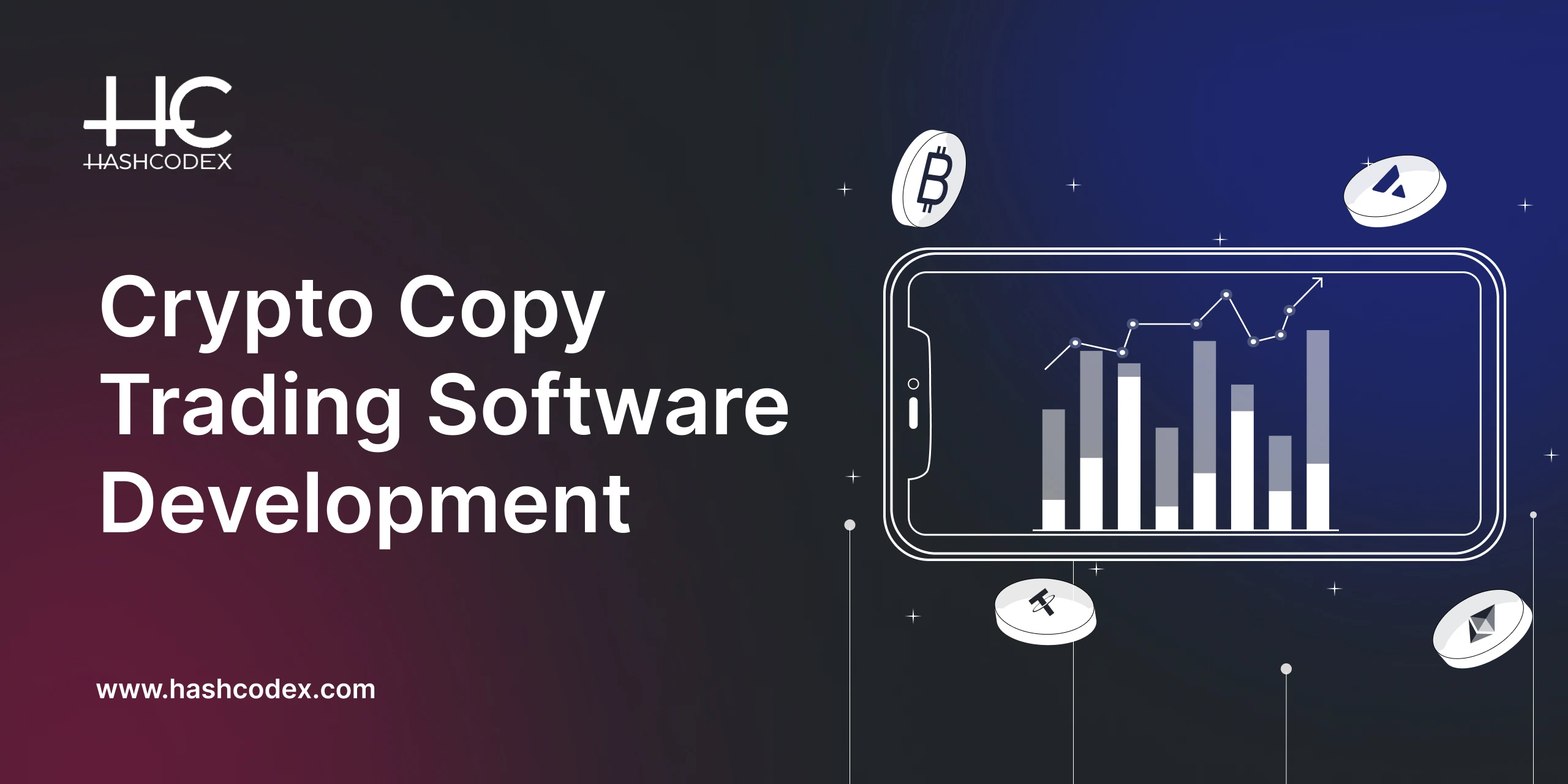
Table of Contents
Are you wondering how long it really takes to build a crypto exchange?
The truth is, that the timeline for developing a crypto exchange can vary based on a few important factors.
But don't worry
once you understand these, planning becomes much easier.
As the crypto market grows, having a secure and efficient platform is more crucial than ever for success.
Building a crypto exchange isn’t just a one-step process. It involves several stages, from the very first idea to the final launch. Whether you’re going for a simple platform or something more advanced, knowing how long each stage will take helps you stay on track.
At HashCodex, we’re here to guide you through every step of the development process, making sure your project moves forward smoothly.
In this blog, we'll walk you through each step of the process and give you a clear idea of what to expect along the way. Keep reading!
Crypto Exchange Overview
A crypto exchange is a platform where users can buy, sell, and trade cryptocurrencies. It acts as a marketplace for digital assets like Bitcoin, Ethereum, and others.
Among the different types of crypto exchanges, there are three main categories:
First, we have centralized exchanges. These are controlled by a central authority, which means one company or organization manages everything.
Next, there are decentralized exchanges. Here, users have full control over their own assets, with no middleman involved.
And finally, we have hybrid exchanges. These combine the best of both worlds, mixing features of centralized and decentralized exchanges for a smoother experience.
Once you have a clear understanding of what a crypto exchange is, the next step is to learn how to develop one.
How to Build a Crypto Exchange: Key Steps and Insights
Developing a crypto exchange may seem confusing at first, but once you understand the key factors, you'll realize how simple it is. Here's a brief overview to guide you through the entire procedure.
1. Strategic Planning and Ideas
In the first step, you need to take a close look at the crypto market to understand what users need and where competitors are lacking. This helps set clear goals, like targeting specific markets or everyday users. Also, make sure to budget enough for development, marketing, and meeting all necessary rules and regulations.
2. Legal and Regulatory Preparations
Securing the required licenses ensures that the exchange operates legally in the target regions. Once the licenses are in place, KYC (Know Your Customer) and AML (Anti-Money Laundering) systems are set up to verify user identities and prevent fraud. Additionally, privacy regulations like GDPR and CCPA are followed to protect sensitive user information.
3. Design of Architecture and Technology
Choosing an appropriate technology provides the foundation for a secure and scalable exchange platform. Once selected, scalable databases are designed to store trading data effectively. The architecture of the system is then developed to guarantee seamless feature integration and upgrades.
4. Designing an Intuitive User Interface
The user interface should be simple and easy to use. A great UI ensures a smooth experience for everyone, whether they are regular visitors or new traders.
It works smoothly on both web and mobile, making browsing faster and trading easier from anywhere. The design is simple and easy to use, so both beginners and experienced traders can navigate with ease.
5. Implementing Security Features
SSL encryption is used to safeguard user information and prevent threats to the platform. Additional security measures, such as biometric logins and 2FA, aid in protecting user accounts. To stop possible dangers, fraud detection programs always keep an eye out for suspicious activities.
6. Liquidity Solutions
Internal liquidity systems are designed to support initial trade activity and ensure seamless functioning. Partnerships with other liquidity providers support the maintenance of market depth and trading volume. Market-making algorithms are introduced to keep competitive spreads and attract traders.
7. Ensuring quality through testing
Functional testing ensures all platform features work correctly under normal conditions. Stress testing checks how the platform performs under high trading volumes and heavy traffic. Security testing helps identify vulnerabilities, ensuring user data and funds are fully protected.
8. Launching the platform
For initial testing, the exchange is first introduced to a small group of users in a controlled setting. The platform is improved and made more user-friendly for a larger audience using the input received during this phase.
Once everything is in place, the platform launches a complete campaign to attract new users.
How long does it take to build a crypto exchange?
Building an advanced crypto exchange involves multiple stages, each one takes time. Here’s an overview:
Planning (1–2 months)
First things first, need to figure out what the exchange is all about. This phase is about setting clear goals, doing market research, and deciding on the standout features that will make your platform different from the rest.
Legal and Compliance (2-4 months)
Next, it’s time to handle the legal requirements. This includes obtaining the necessary licenses, setting up client verification (KYC), and ensuring the platform complies with all relevant laws.
This step is crucial for building trust and staying on the right side of regulations.
Development (6–9 months)
During this phase, the platform is built from the ground up. It involves designing the system, integrating trading functionalities, and ensuring the platform is secure. This is where the ideas become a fully functioning product.
Testing (3–4 months)
Before launching, the platform goes through extensive testing. This step helps identify bugs, fix security issues, and ensure the platform can handle high traffic. Thorough testing is key to making sure everything works perfectly.
Launch (1 month)
A soft launch happens at this stage to gather user feedback, make final improvements, and prepare for the full-scale launch. It’s the final step before going live.
Developing a cryptocurrency exchange from the ground up typically requires 13 to 20 months, depending on the complexity of its features.
However, choosing a white-label solution significantly reduces this timeframe. Why? The core framework is already developed, requiring only customization to align with your specific requirements.
In essence, it’s a faster, more efficient path to launching your exchange
What is the Estimated Time to Develop a Crypto Exchange Platform?
The estimated total time to develop a crypto exchange depends on the platform's complexity and features. Here's how it typically varies:
Basic Crypto Exchange
It can take six to ten months to establish a basic exchange with few features. This covers user management, fundamental trading features, and essential security protocols.
Advanced Crypto Exchange
Usually, it takes 13 to 20 months to create an advanced crypto exchange with features like multi-currency trading, margin trading, high-level security, liquidity integration, and analytics tools.
Custom Crypto Exchange
A fully customized exchange designed to meet unique business needs or target a specific market may take 18-24 months or more, depending on the level of customization and integration required.
What are the Factors impacting the Development Timeline?
The following factors influence the development time of a crypto exchange:
1. Feature Customization
The development process takes longer for features that are more complex and customized. It takes more time to design and implement complex features like margin trading and multi-currency trading.
2 . Regulatory Compliance
It takes time to comply with regulations such as KYC (Know Your Customer) and AML (Anti-Money Laundering). The development process may be delayed by obtaining licenses and ensuring the platform complies with legal requirements in different locations.
3. Security Protocols
To protect users and assets, advanced security measures such as encryption, multi-signature wallets, and two-factor authentication are necessary. Implementing and verifying these systems takes time, but it is essential for secure exchange.
4. Team Expertise
A skilled development team may speed up the process, whereas a less experienced team may take longer to finish the project.
5. Testing and Debugging
Thorough testing takes time to find and resolve defects, security holes, and performance concerns. This guarantees that the platform is secure, stable, and able to manage high user traffic before launch.
Time-Saving Techniques for Building a Crypto Exchange
To speed up the development process, consider these ways that can reduce the time needed.
White-Label Solutions
White-label platforms offer pre-built exchanges that can be customized to your brand. This saves time and reduces the need for extensive development. It’s an efficient way to launch quickly with minimal effort.
Pre-built Compliance Systems (KYC/AML)
Pre-built KYC (Know Your Customer) and AML (Anti-Money Laundering) systems ensure compliance and prevent fraud. KYC verifies user identities, while AML detects suspicious financial activities. Using these systems speeds up onboarding and saves time in development.
Conclusion
Building a crypto exchange might seem tough.
But guess what?
With the right team, it doesn’t have to be.
Here’s the deal: Success starts with solid strategies, top-notch security, and sticking to regulations. These are the key ingredients for a smooth development journey.
Now, here’s where HashCodex a reliable cryptocurrency exchange development company steps in.
We’re not just a company—we’re your trusted partner every step of the way. From start to finish, we’ll make sure your project is done on time, delivering the best experience for both entrepreneurs and users.
Do you have big plans? Whether it’s a basic exchange or a complex one, we’ve got the skills to handle it all. Every detail of cryptocurrency exchange development is our specialty.
So, why wait? Trust HashCodex to bring your crypto platform to life—efficiently, on time, and to the highest standards.



